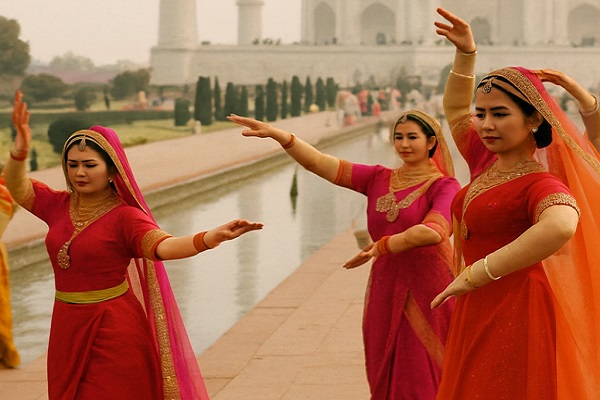Cultural Tourism at Carnival, Surakarta: A Celebration of Javanese Tradition

Surakarta, also known as Solo, is a vibrant city located in Central Java, Indonesia. Known for its rich cultural heritage and historical significance, Surakarta is a hub for traditional arts, crafts, and performances. One of the most exciting cultural events in the city is the Solo Batik Carnival, a colorful and energetic festival that showcases the cultural diversity and artistic traditions of the region.
Why Carnival in Surakarta is a Cultural Tourism Gem
The Solo Batik Carnival is more than just a parade; it’s a celebration of Javanese culture, with a particular focus on batik, a traditional cloth-making technique recognized as a UNESCO Intangible Cultural Heritage. This carnival, held annually in Surakarta, attracts visitors from around the world to witness the fusion of traditional arts and modern creativity.
This event is a prime example of how cultural tourism can both preserve and innovate local traditions. With stunning batik costumes, vibrant street parades, and live performances, the Solo Batik Carnival offers tourists an immersive cultural experience that highlights Surakarta's dedication to preserving its unique heritage.
Key Highlights of the Solo Batik Carnival
Batik as the Star of the Show Batik, a technique of hand-dyeing fabric with intricate patterns, is the main focus of the carnival. Participants wear elaborate batik outfits, showcasing a blend of traditional designs and contemporary interpretations. The use of batik in the carnival not only promotes the local textile industry but also raises awareness of the art form’s cultural significance.
Colorful Parades and Performances The carnival features a lively procession through the streets of Surakarta. Participants, including locals and tourists, parade in eye-catching costumes made from batik fabric. Traditional Javanese dances, music, and performances fill the air, immersing spectators in the rhythm of Javanese culture. The performances highlight the region's classical music and dance forms, including the gamelan orchestra and wayang kulit (shadow puppet theater).
Traditional Arts and Crafts During the carnival, visitors can explore numerous cultural exhibitions that display Surakarta’s traditional arts and crafts. Local artisans showcase their skills in batik-making, painting, pottery, and wood carving. This is an excellent opportunity for tourists to learn about the intricate processes behind Javanese crafts and even take home authentic souvenirs.
Local Cuisine The Solo Batik Carnival also celebrates the culinary traditions of Surakarta. Street food stalls line the carnival route, offering a variety of Javanese delicacies such as selat solo (a traditional Javanese salad), tahu kupat (fried tofu with rice cake), and brongkos (a savory beef stew). Sampling these dishes provides a deeper understanding of the region’s culinary heritage.
Cultural Workshops and Classes In addition to the parade, the carnival features workshops and classes where visitors can try their hand at traditional crafts like batik-making and Javanese dance. These hands-on experiences allow tourists to engage with the culture on a personal level, providing a deeper connection to the traditions that define Surakarta.
The Importance of Cultural Tourism in Surakarta
Cultural tourism in Surakarta, especially during the Solo Batik Carnival, plays a significant role in preserving local traditions. By attracting tourists, the event generates awareness and appreciation for Javanese arts, music, and dance, contributing to the conservation of these practices.
Moreover, the carnival supports the local economy, creating opportunities for artisans, performers, and hospitality businesses. It fosters cultural exchange, as visitors from around the world interact with locals and learn about the rich history and customs of Surakarta.
Responsible Cultural Tourism
While the Solo Batik Carnival is an exciting and educational experience, responsible cultural tourism practices are essential to ensure that the heritage of Surakarta remains intact. Tourists are encouraged to respect local customs, support local artisans, and minimize their environmental impact.
Conclusion
The Solo Batik Carnival in Surakarta is a prime example of how cultural tourism can bring people together to celebrate and preserve unique traditions. With its colorful parades, traditional performances, and vibrant atmosphere, the carnival offers an unforgettable experience for travelers seeking to immerse themselves in Javanese culture. Whether you’re a fan of art, music, food, or history, the Solo Batik Carnival in Surakarta has something for everyone.























